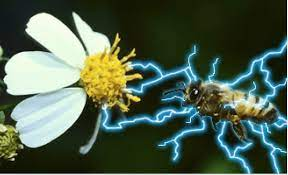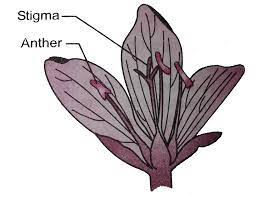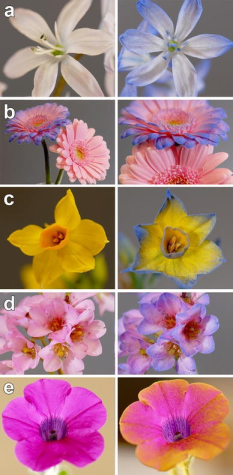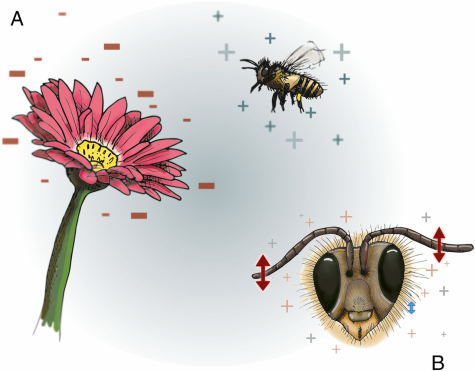Electric Bees?

September 19, 2022
From bats to beetles, to bees, there exist nearly 200,000 species of pollinators worldwide, assisting almost 250,000 different flowering plant species. We know that many, such as bees, are attracted to flowers for their pollen as a food source, but how do they choose which flower to visit? Do they choose by color? Shape? Size? Recent research shows that all of these factors play into bees’ attraction to flowers, but not in the way you might think. These details all play a part in the electric field of each and every flower.
The electric relationship between the flower and the bee formed through millions of years of coevolution, meaning the two evolved side-by-side. So how does this work?

The flower plays the most crucial role of the two, creating a unique electrical field to attract the bee. As you’ve likely noticed, most flowers have distinct geometric patterns to their shape. The edges of petals, along with protruding details such as the anthers and stigma, carry the highest charge, shaping every flower’s electric field differently. This is pictured below by the electrostatically charged colored powder on the flowers in the right panel. The flower’s electric field holds a negative charge, which comes from a process known as electrostatic induction. Simply put, electrostatic induction is the effect of an object’s surroundings on its electric field. Even so, since bees and flowers aren’t magnetic, what purpose does this charge serve?

Well, much like how the flower gains a small electric charge, the bee also gains a small charge through an event known as the triboelectric effect. Simply put, the triboelectric effect is when a material gains or loses electrons upon frictional contact with another material. Even so, the bee isn’t automatically drawn to the flower due to these two charges, as both charges are far too weak on their own. The secret to how the bee uses this charge to its benefit is in its short black and yellow hair and skinny antennas.

The negative charge of the flower pulls on the positive charge of the bee, causing the hair to tilt that direction, or for the antenna to spin. The movement of these stiff physical features sends neural stimuli from each individual ”trigger” to the bee’s central nervous system, providing the bee with the information it seeks about the flower (based on the strength of the charge). This process makes bees electroreceptive, meaning they have the ability to detect weak, naturally occurring electrostatic fields in their environment.
This is how bees are able to discern one flower from another, by the different pulls created by varied floral electric fields. In this sense, bees can actually develop “favorite” flowers and can sense whether a flower has been recently visited or not, in turn sensing the amount of pollen left on the flower. This process is known as aerial electroreception.
Bees are one of many species of animals on Earth that use electroreception; they join other species such as the echidna, platypus, and several species of fish and rays.




